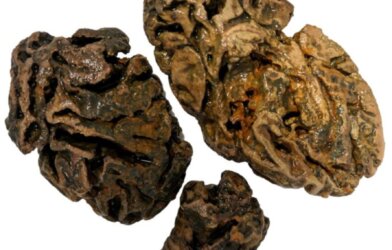The bravest are surely those who have the clearest vision of what is before them, glory and danger alike, and yet notwithstanding, go out to meet it. -Thucydides 460 – 400BC
On September 11, 2001, the two tallest buildings in one of America’s defining cities, in an apocalyptic act of terrorism, were reduced to a tangled hell of rubble and tens of thousands of pieces of human bodies. Occupants streamed out as the buildings were evacuated. Firefighters streamed in, coming to their rescue. Those firefighters and other first responders knew they would not be coming out of the buildings alive, yet they each made a conscious decision to sacrifice their lives to save the lives of others. How? Why?
In a new study at Karolinska Institutet, Stockholm, researchers show that the system in the brain that alerts an individual of danger is the same system instrumental in altruistic behaviors.
“Our findings indicate that the brain’s defense system plays a greater role in helping behavior than was previously thought. These results contradict the conventional wisdom that we need to suppress our personal fear in order to help others who are in danger,” says Andreas Olsson, professor with the institute’s Department of Clinical Neuroscience, in a statement.
It has been a general belief that empathy drives selfless helping, but there must be more than empathy at work. Danger to self must be considered when helping others in danger. Studies in animals indicate that the brain’s defense systems are important for helping others, but knowledge is scant about similar functions in humans.
The new study included 49 healthy volunteers who were asked to decide whether they wanted to help an unknown person avoid the discomfort of a mild electric shock. If they helped the person, they risked receiving a shock themselves. The unknown person was visible to the participant on a screen. During the task, the activity in the participants’ brains was imaged with an fMRI scanner.
“The results show that the systems in the brain that make it possible for people to avoid danger are also involved in selfless, helping behavior toward unknown individuals,” says Joana Vieira, a scientist affiliated with the Karolinska Institutet. “For example, we see that an evolutionarily ancient region of the brain, the amygdala, which is known to be responsible for basic defense behaviors, is associated with the willingness to help others.”
The intensity with which the amygdala presents the threat to the person being studied, not the others’ distress, could predict whether the participant would help. Cognitive functions were not associated with helping behaviors when the threat was immediate.
“Now we are trying to understand how these helping behaviors are affected when other people are present, and how the bystanders learn from the situation. We are interested in understanding how fears and the perception of behaviors as moral or immoral are conveyed between people through learning processes,” says Olsson.
Now we know something about the “how” of responses to threats, but we still don’t have a “why.” What would you do?
The study is published in the October 25, 2022 issue of eLife.












